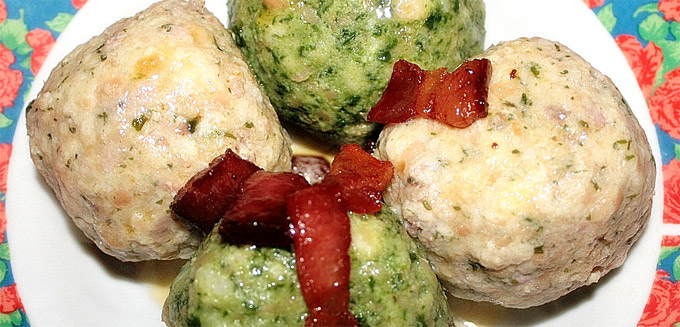 Knödel
Delicious mixtures of spherical and of variable composition, the dumplings are a traditional dish of Austrian cuisine, although widespread in parts of southeastern Europe such as Germany, the Czech Republic, Poland and Trentino Alto Adige. Ideal for delicious lunches and dinners, winter and autumn, the recipe for these delicious dumplings has very ancient origins, so that one of the earliest artistic representations of this dish is depicted in the frescoes that decorate the Romanesque chapel of Hocheppan, origins, among other things, very particular: in country cooking, in fact, the preparation of this delicious dish allowed the recycling of leftover food, for the accuracy of scrap of bread became stale that were matched to the products that the breeding put at the disposal. Compounds and then cubes of stale bread, milk and eggs, (but which can detect variations include buckwheat polenta instead of bread) and usually flavored with added bacon (or bacon) (Speckknödel) or cheese (Käseknödel) and parsley, (and sometimes onion), dumplings may be accompanied by local dishes such as stew (goulash), sauerkraut, cabbage raw or wild chicory. Furthermore, a variation of the ingredients also allows the realization of the sweet dumplings: the mixture of potatoes and flour that is used for making the gnocchi is spread, so as to form a sheet thickness of about one centimeter. The apricots (or prunes) are deprived of the core, and it remained in the cavity adds a little 'sugar (typically, half a cube), and sometimes cinnamon and / or cloves. After the toasted bread crumbs along with butter, sugar and cinnamon, until the caramelization of sugar, the fruit in question is wrapped in pastry, and then be boiled, cooked, rolled in bread crumbs previously prepared. Traditionally, this tasty preparation is not served as a dessert, but as a main dish. |